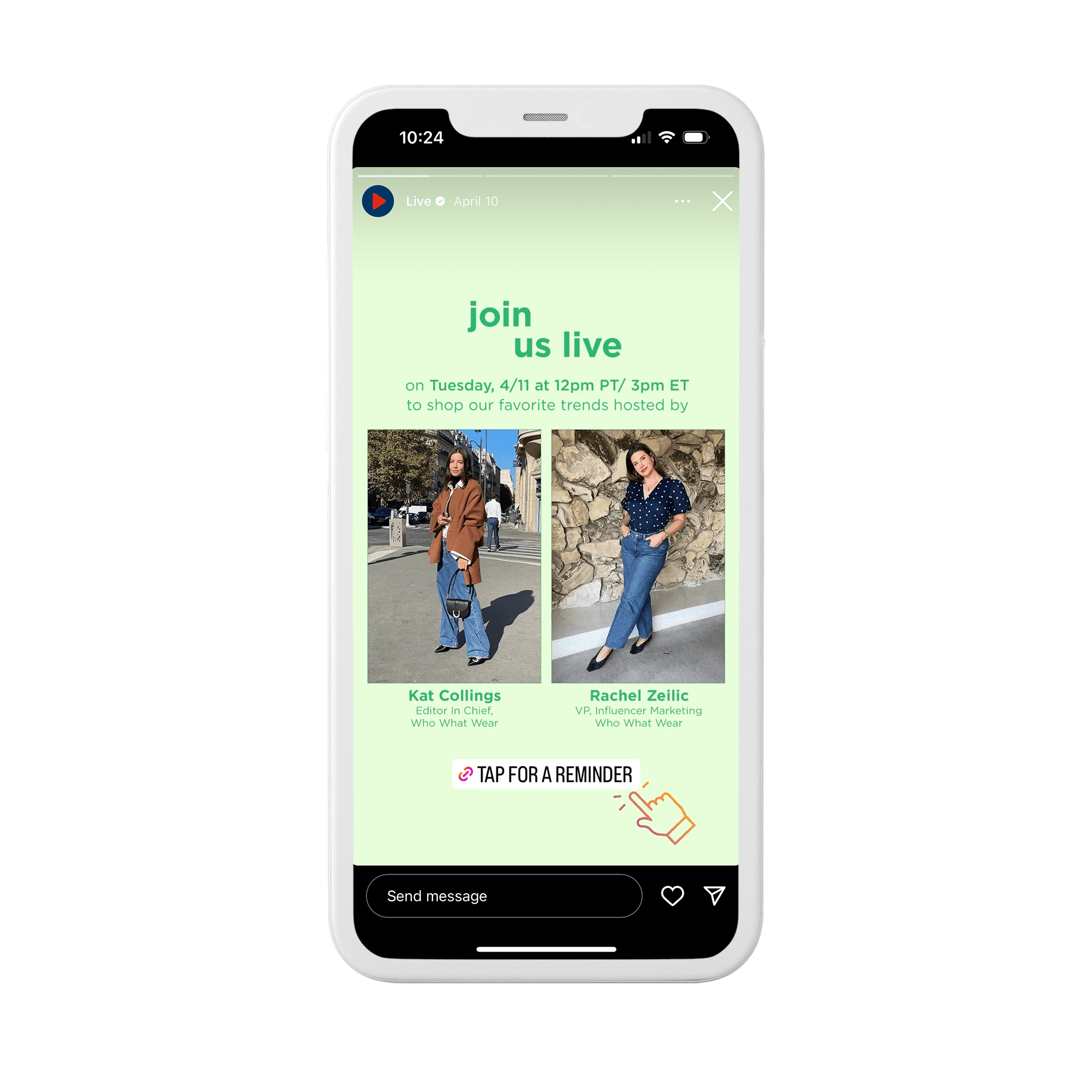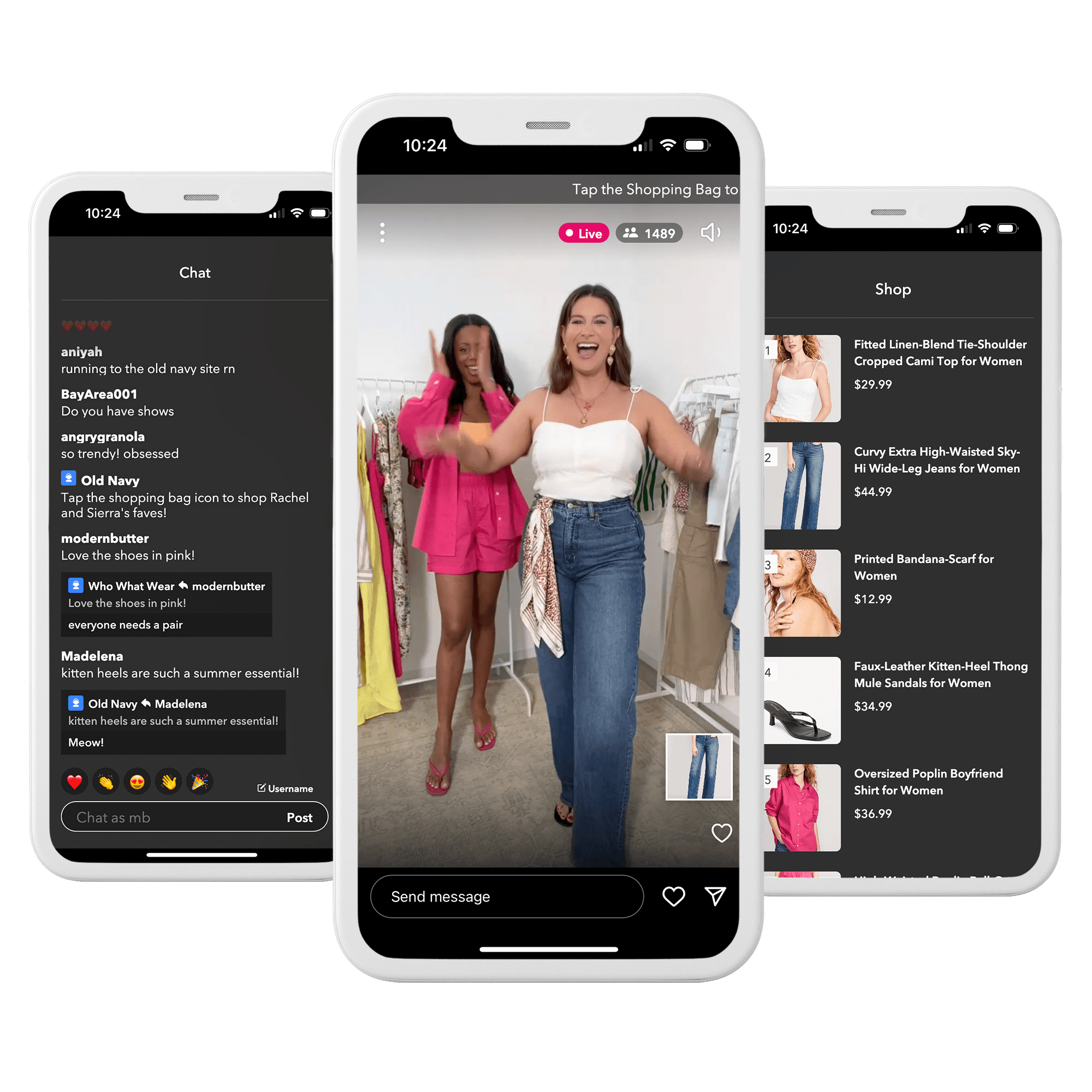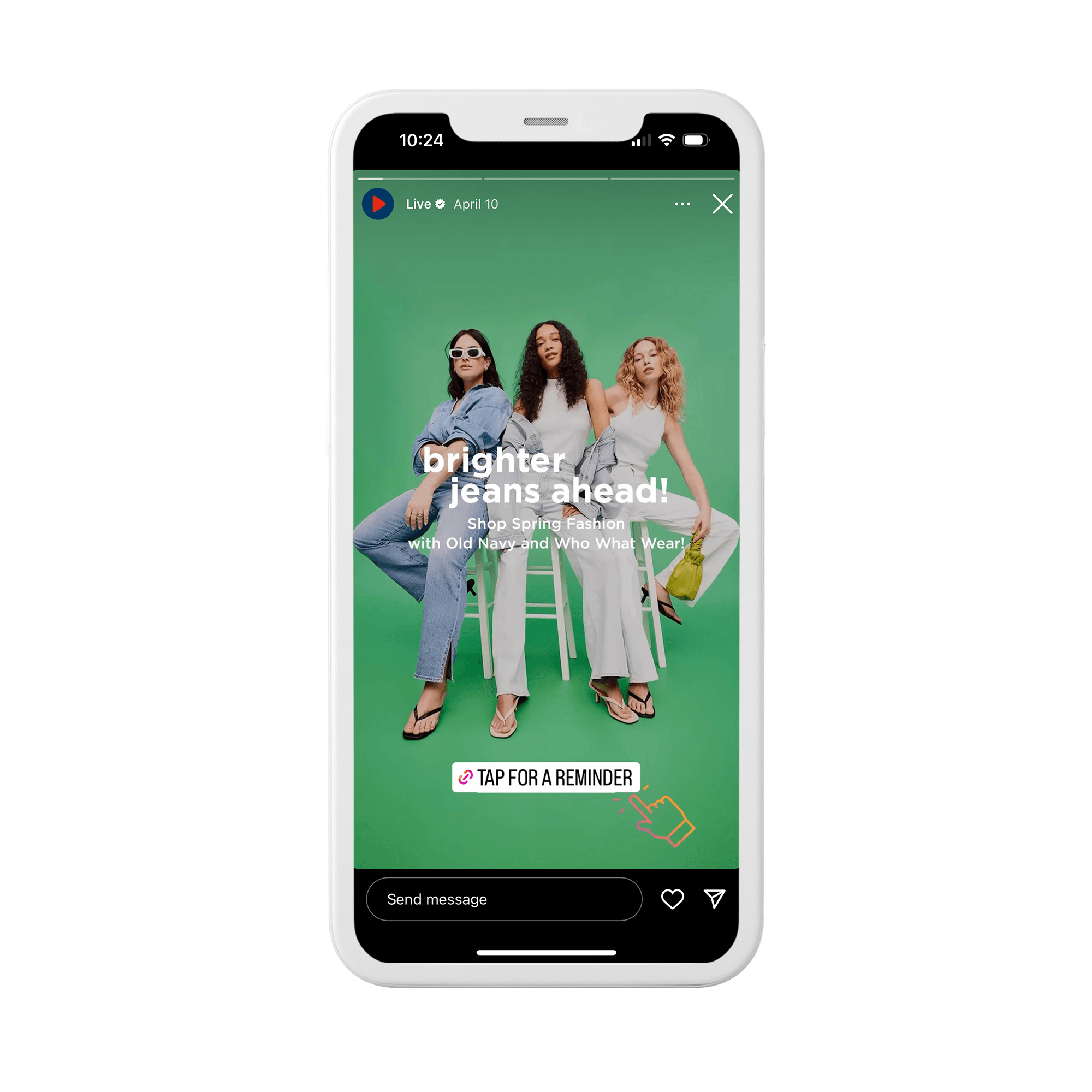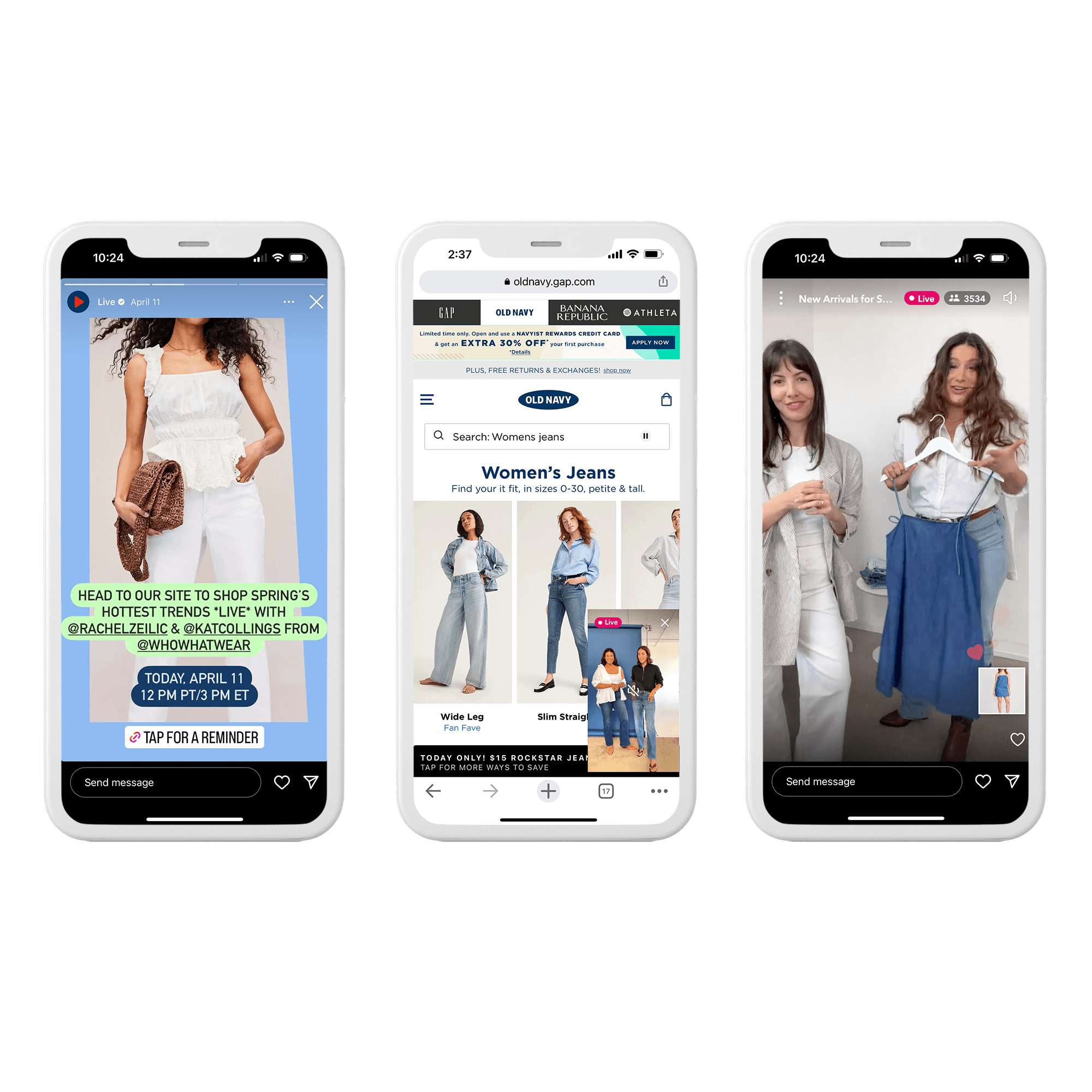Accessibility Tools
PMG Digital Made for Humans
Unlocking the Secrets of Live Shopping: Best Practices from Old Navy’s Live Shopping Activation
June 5, 2023 | 4 min read
This article was originally published on MediaPost.
Livestream shopping has taken Asia by storm, representing $514 billion in sales in 2022, according to eMarketer. While adoption in the U.S. is still in its early phases, platforms like TikTok, YouTube, and Amazon continue to launch new features and capabilities. As shoppers grow more comfortable with the live online shopping experience, there are ample opportunities for brands looking to activate and gain a first-mover advantage within this new digital marketing channel.
While it’s easy to confuse live shopping with the traditional QVC home shopping model, there are a few best practices for live shopping that can help transform this buzzy new commerce approach into a revenue-driving activation. Equipped with these optimization tips, any media strategy can be bolstered by live shopping and its added benefit of real-time interaction with customers.
Selecting the right talent to host a live shopping event is critically important. The host is ultimately responsible for showcasing products, providing commentary, and driving the show forward while ensuring the target audience remains engaged. Because U.S. shoppers may be unfamiliar with the ins and outs of live shopping, brands are best served investing in the right talent to generate brand awareness and excitement around the event and deliver a valuable shopping experience for the audience.

For example, Old Navy’s recent partnership with Who What Wear featured editorial talent who lended credible voice and strong styling perspective to the show. Throughout the livestream, each editor appeared with the host, Rachel Zeilic, VP of influencer marketing at Who What Wear, showcasing different looks and chatting about each product’s key attributes.
After the event wrapped, the livestream was available for replay and promoted with Who What Wear. The Old Navy live shopping event engaged more than 17,000 live viewers, far exceeding industry benchmarks for livestream engagement. The replay reached more than three million Old Navy customers on the brand’s website, as credible voices from Who What Wear helped position the brand as a denim destination for shoppers.
Similar to Old Navy’s recent live shopping activation, platforms like Amazon Live’s live shopping program takes a similar approach by regularly partnering with celebrities and influencers, such as reality TV star Paige DeSorbo.
Whether it’s special products, an exclusive promotion, or even a product discount, there are plenty of creative opportunities for giving viewers an incentive to tune in, watch, and shop. The art of keeping viewers engaged has to go beyond a single host holding products in front of the camera and talking for an hour. Taking a conversational approach that encourages viewers to actively engage draws the audience further into the experience.

By bringing in experts and curating a must-watch experience, livestream shopping can garner added credibility for the brand while showcasing products in an interesting way. Some live shopping events even feature two hosts who speak with one another and the audience about the product or have the host interact with models who come in and out of frame with different products. For retail and beauty brands, consider featuring a brand stylist or representative to share more about the product and the production process.
The real-time nature of live shopping requires brands to invest in a paid and organic channel promotion and media strategy that surrounds the event before, during, and after the livestream.

A balance must be struck between pre-livestream promotions so that messaging is not launched too early (or viewers will forget to tune in), but also not too late (as customers can miss the event entirely).
In terms of a live shopping media strategy, we often recommend that brands should:
Launch promotional messaging across social media and other marketing channels no more than a week prior to the event.
Feature day-of promotional messaging before and during the livestream via high-impact media, social ads, push notifications, emails, and other channels to drive traffic and last-minute audience engagement.
The majority of livestream views and product sales will come during the post-promotion period where the replay or cutdown of the livestream is repackaged and featured across channels. Typically, a one- to two-week post-promotion period is the sweet spot for driving additional views and promoting relevant content and products.
Even with the best production and content, proactive planning is fundamental to hosting a successful livestream shopping experience. Practice runs provide an opportunity to troubleshoot the run of show, venue lighting or sound, internet connectivity, and product tagging.

They also allow the host or any special guests to host a full dress rehearsal of the agenda and get more comfortable with talking points, transitions, and chat engagement with the audience. We’ve found these trial runs incredibly helpful, especially if it’s the first live shopping experience for the brand.
—
While livestream shopping continues to evolve, brands can benefit from the latest advancements in livestreaming by jumping in early and capture demand as a first-mover on one of the most exciting, emerging content and shopping formats as it becomes more mainstream.
About the Author
This article was written by Mallory Bransom